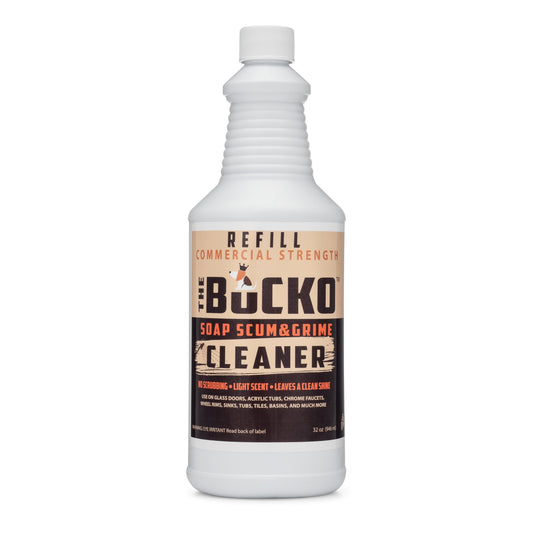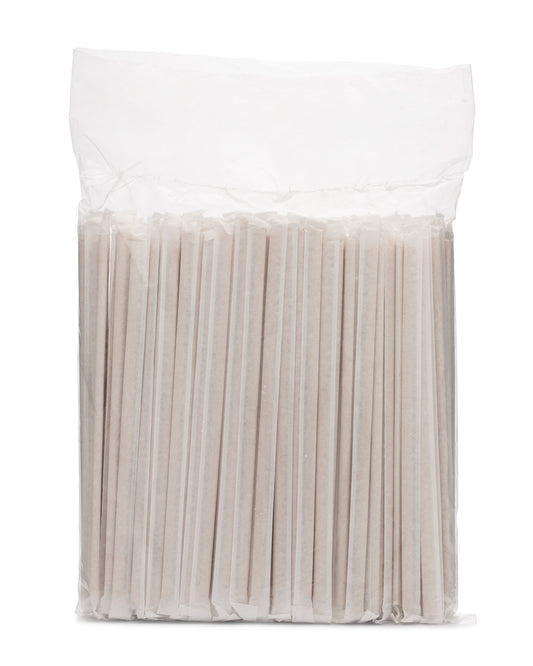
We compare plastic straw alternatives
Share
In 2018, the average American used 1.6 single-use plastic straws per day - adding up to a plastic trail that could wrap around the globe two and a half times (Glass straws? Straw straws? Here are some eco-friendly alternatives to plastic). In the past few years, people have begun to cut down on their use of single-use plastics by refusing plastic straws, and businesses have adjusted accordingly.
While some corporations have made sustainable switches easily - like Starbucks, who replaced their straw-fitting lids with ones that customers can sip from directly - smaller businesses are straggling behind. There are so many sustainable straw options on the market now, how do you know which one to choose? Here’s a breakdown of the most popular straw swaps, so that you can choose the best one for your business.
Glass and Metal
Both glass and metal straws are luxurious options that can be reused for years. These are both smart options for sit-down restaurants and higher-end bars where customers will be spending longer amounts of time talking and sipping. Boba shops such as Boba Guys (BOBA GUYS METAL REUSABLE STRAW) and Bopomofo (Boba MOFO Reusable Straw Set) sell branded metal straws, and straw sets are available for consumers to purchase directly for use at home. These sleek materials are an investment for both businesses and consumers. Whereas plastic straws cost pennies per straw, a glass or metal straw can cost upwards of two dollars each. Though they’re a great option for people who love to drink through straws, these materials aren’t the best option for businesses who need to stock up on hundreds of straws a day.
Silicone
Another popular sustainable option is a silicone straw. Similar to glass and metal straws, silicone straws can be purchased directly online, so that anyone can have an eco-friendly alternative for sipping at home. Silicone straws are dishwasher safe, durable, reusable, and flexible - unlike glass and metal straws, silicone straws are bendy, making them safe for teeth and gums. Yet, similar to glass and metal straws, silicone straws are more expensive than the conventional plastic straws - averaging at about a dollar per straw on Amazon, silicone straws are more accessible than their glass and metal counterparts, while still being out of range for most businesses.
Paper and PLA
Paper and “compostable” polylactic acid (PLA) straws are the most popular alternatives to plastic straws in the food and beverage industry. Both of these materials boast quicker decomposition timelines, thus marketing them as more eco-friendly than plastic. Both paper and PLA straws are also widely available to restaurants at low prices. Unfortunately, behind these two attractive features are some ugly truths: paper straws are resource intensive and unpleasant to use after they’ve been sitting in a drink; and PLA straws are not, in fact, easily compostable.
PLA will only “decompose” under specific conditions, often found in specialty commercial facilities that heat the straws for a prolonged period of time (The 4 Truths of PLA Straws) - though these conditions are available in special facilities, backyard compost piles and landfills will not create a proper environment for PLA to decompose. Because these specific needs are rarely met, PLA straws most often just end up in trash bags next to plastic straws.
Bamboo Fiber
It seems like every alternative straw comes with a slew of unique issues - is there any kind of straw that will allow us to enjoy our drinks without killing the planet?! There may not ever be a perfect straw, but there is one kind that is eco-friendly while also being pleasant to use: bamboo fiber straws.
Unlike glass, metal, and silicone straws, bamboo fiber straws are on the cheaper end of the spectrum, making them more accessible and feasible for businesses and individual consumers to use on a daily basis. Another perk to bamboo straws is that they are easily compostable - after use, they can be tossed into a backyard compost bin, and will decompose into compost in a few months’ time. Or, they can be washed and dried for reuse, and they’re fit for multiple uses thanks to the sturdiness of the bamboo fibers.
Ultimately, the most important part about a straw is its ability to hold up in drinks of any kind. Bamboo fiber straws are not as texturally smooth as other materials, but they are all-natural and do not leak toxic chemicals into your drinks - both hot and cold. Additionally, bamboo fiber straws are available in various sizes and diameters, so there’s a bamboo fiber straw for every drink: hot coffee, cold soda, smoothies, and even boba tea.
If you're interested in bamboo fiber straws, check out our PandaBoard straws today!











